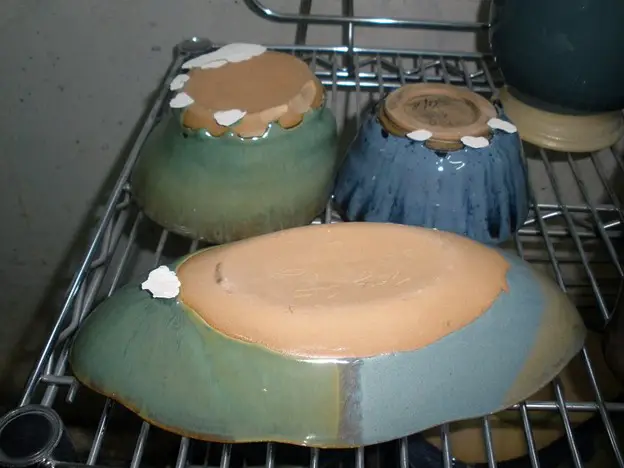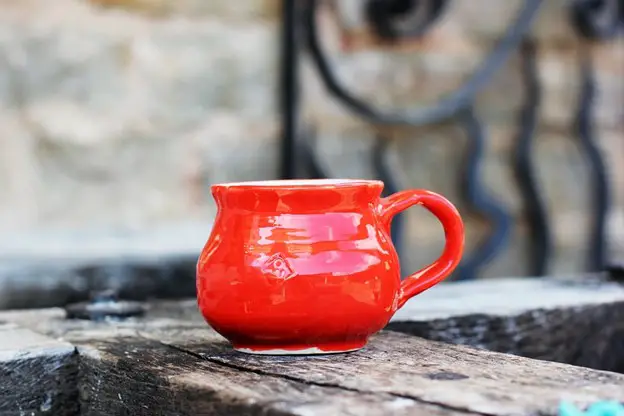Is a kiln way out of your budget? Are you a beginner pottery artist wishing to glaze their artwork in the comfort of your home? If so, you might be wondering if your home oven could come into play. But, remember, not all types of glazes would work in your home oven. So, which is the right choice or type of glaze to be used in your home oven?
Let us understand more about your options and the glazing practice that you must follow when using a home oven.
How does glazing work?
Before you learn about the best glaze option for your pottery piece, you need to understand the process. Glazing is a method of adding some colors to your pottery with the help of a liquid mix. The process post-firing makes the piece food-safe, water-resistant, and even more durable.

With the right temperature, the chemical present in the glaze fuses and fluxes with the clay body and becomes one with it. However, the home oven has a low-temperature range as compared to kilns. So, the glazes that need to be fired at high temperatures won’t work well in this case.
So, the key is to use a glaze that falls in the low-fire range.
Why choose low-fire glazes for a home oven?
Even if you have the costliest home oven in your kitchen, it can never attain a temperature that is achievable with a pottery kiln. So, you can forget about using a glaze recipe that requires high-temperature firing. Even if you pop it inside the oven, it would come off or peel off from the surface as the fusion won’t happen properly.
You can select from a range of low-fire glaze recipes for your home oven. If you plan on bringing uniqueness to the pottery piece, a low-fire recipe will get it done on a budget.
Waxy-Matte Glaze Recipe for Home Oven
If you are working with earthenware, this glazing process will work perfectly. However, this glaze firing would work best when used with cone numbers that range between 012 and 09. So, let us check out the recipe for firing glazed pottery in your home oven.
Recipe for low-fire glaze:
-
Silica-Oxide: About 10 parts of the entire mixture
-
Gerstley Borate: About 30 parts of the entire mixture
-
Kaolin: About 20 parts of the entire mixture
Depending on the results you need in your pottery piece post-firing, you can change the ratio of the mixture.
Before you start mixing these ingredients, make sure you sieve the powder through a fine mesh and remove any coarse or big pieces. This will help create a smooth and homogenous mixture that doesn’t have any poking or piercing surface.
With this particular glaze mix for home-oven, you can create the following looks:
- Matte Look:
For pottery artists that do not like their artwork to be too shiny or loaded with bling, this particular formula can be modified in terms of proportion to create a matte look. Not every hot glazing technique in the home oven achieves a matte hue.
In case you find it difficult to work with the proportions, you can simply opt for a ready-to-use mix. The Amaco Low-Fire Lead-Free Matte Glaze will give you the best results when firing in your home oven. Moreover, its lead-free formula ensures that it is safe for use as kitchenware as well.
- Waxy Look:
The best thing about this recipe is the fact that it is easy to achieve a waxy look after being fired in the home oven. Even though firing in the home oven might not make it as shiny and vibrant as is achievable with kiln-firing glazing recipes, it sure brings a sense of elegance and class to the pottery piece.
The recipe is easy to try & serves as an ideal choice for beginner pottery artists. However, you also need to understand that the simplicity of this recipe might not allow you a scope to experiment much. But, it is ideal if you plan on mastering your skills before trying out the kiln-firing glazes.
Here are some more low-fire glaze mixtures you can try in your home oven.
Base |
Ingredients |
Percentage in the Mixture |
Matte Base |
EPK KaolinWhitingFerro Fit 3195 |
144343 |
Glossy Base |
EPK KaolinFerro Frit 3124Gerstley Borate |
303040 |
Satin Base |
EPK KaolinDolomiteFerro Frit 3195 |
203050 |
Does glaze temperature really matter?
Different pottery ingredients exist in different states like liquid, solid, or gaseous. The prime difference between these states is the object’s temperature. Normally, glazes are solid when kept at cold or room temperature. Once you start heating it, the glaze turns into liquid and can be used on your pottery piece for home oven baking. They can even attain a gaseous state at a particularly high kiln firing temperature.
Products like earthenware, whiteware, terracotta, & low-fire ceramics can be fired or at least baked in a home oven. Once fired, these clay bodies achieve maximum strength with water-proof features. Low-melting ingredients like lead, sodium, or potassium, when added to the glaze, make up for an ideal home oven firing piece.
Conclusion
The best thing about low-fire glazing in a home oven is the fact that it helps with massive cost savings as you don’t have to invest in kiln firing. Plus, the energy usage is definitely less than that of the kiln when you use a home oven. Glazing in a home oven is easier and ideal for beginners who are just getting their hands on the art. With low-fire home oven glazing, you get a chance to bring out a range of bright and bold colors. In terms of availability, low-temperature glazes can be found both offline and online with ease. The only thing you need to keep in mind is that home oven firing might not make your piece completely waterproof. So, it is best to use these pieces for decorative purposes only.








